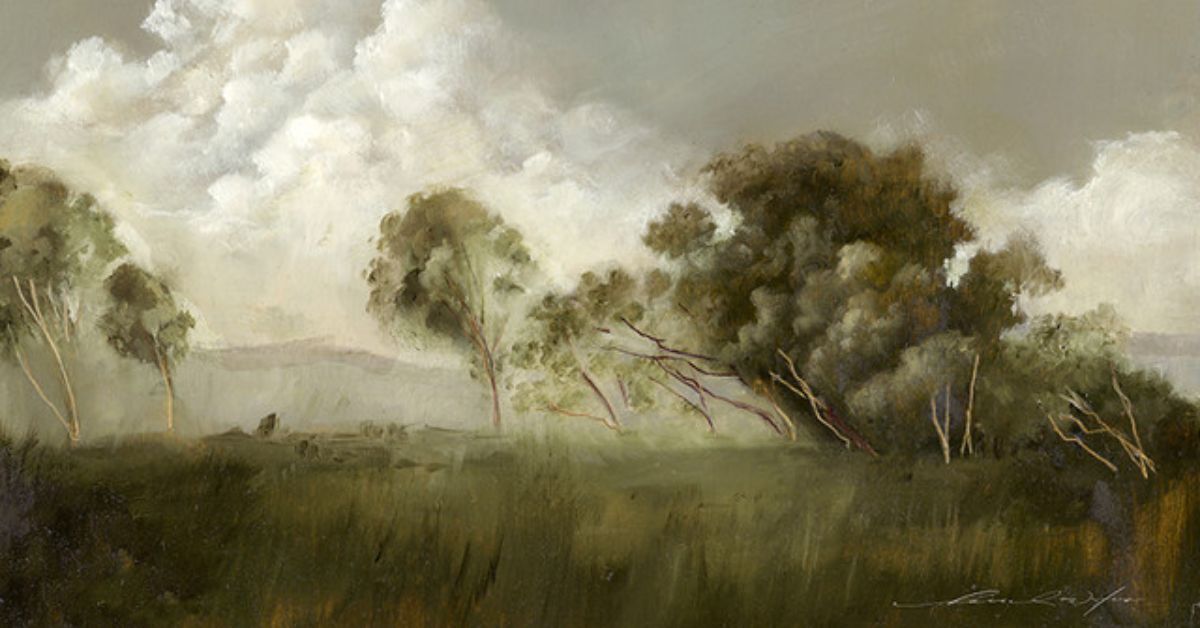Landscape art prints have emerged as one of the most compelling ways to breathe life into modern interiors. These captivating visual elements possess an extraordinary ability to reshape the atmosphere of any room, creating environments that feel both sophisticated and deeply personal. From sweeping mountain vistas to tranquil coastal scenes, landscape prints offer homeowners an accessible pathway to artistic expression that extends far beyond simple decoration.
The growing popularity of landscape prints reflects our collective desire to connect with nature, even within urban environments. Professional interior designers increasingly recognize these pieces as powerful tools for spatial transformation, capable of establishing mood, directing attention, and creating visual narratives that resonate with both inhabitants and guests. The versatility of landscape prints makes them suitable for virtually any interior style, from minimalist modern spaces to richly layered traditional rooms.
Understanding how to harness the transformative potential of landscape prints requires careful consideration of their aesthetic impact, emotional resonance, and practical application within different living spaces. When selected and positioned thoughtfully, these prints become more than decorative accessories—they evolve into integral components of thoughtful interior design.
Benefits of Landscape Art Prints
Enhancing Aesthetics
Landscape art prints fundamentally alter the visual dynamics of interior spaces by introducing depth, movement, and natural beauty. These prints create visual weight that balances furniture arrangements while adding layers of complexity to otherwise simple wall treatments. A well-chosen landscape print can transform a stark white wall into a window to another world, introducing textures, colors, and forms that complement existing design elements.
The aesthetic enhancement extends beyond individual rooms to create cohesive visual flow throughout entire homes. Landscape prints can establish color themes that connect disparate spaces, creating a sense of unity and intentional design. The natural elements depicted in these prints—rolling hills, dramatic skies, serene water bodies—bring organic shapes and patterns into angular interior spaces, softening harsh lines and creating more inviting environments.
Creating a Focal Point
Strategic placement of landscape prints establishes clear focal points that guide the eye and organize visual space. A large-scale mountain landscape positioned above a dining table draws attention while serving as a natural gathering point for conversation. These prints serve as anchors for furniture arrangements, helping define seating areas and traffic patterns within larger rooms.
The focal point created by landscape prints differs from other decorative elements because of their inherent storytelling quality. Viewers naturally engage with landscapes on an emotional level, spending more time examining details and allowing their imagination to wander within the scene. This extended engagement transforms these prints from simple decorative objects into conversation starters and sources of ongoing visual interest.
Evoking Emotions and Memories
Landscape prints possess remarkable power to influence mood and emotional state through their depiction of natural environments. Ocean scenes introduce feelings of calm and expansiveness, while forest landscapes create intimate, contemplative atmospheres. Mountain vistas inspire feelings of adventure and grandeur, making rooms feel more dynamic and inspiring.
The emotional impact of landscape prints often stems from personal associations and memories. A coastal scene might remind viewers of childhood vacations, while a pastoral meadow could evoke feelings of peace and simplicity. These emotional connections make landscape art for the home particularly meaningful, creating spaces that feel personally significant rather than merely stylish.

Choosing the Right Landscape Art Print
Size and Scale
Selecting appropriate dimensions for landscape prints requires careful assessment of room proportions and existing furnishings. Oversized prints can overwhelm small spaces, while diminutive pieces may disappear in large rooms with high ceilings. The relationship between print size and furniture scale determines whether the artwork feels integrated or disconnected from its surroundings.
Consider the viewing distance when determining print dimensions. Prints positioned above seating areas should be large enough for guests to appreciate from normal conversation distance, typically spanning two-thirds to three-quarters of the furniture width below. Hallway placements can accommodate smaller prints, as viewers will pass by the artwork more closely.
Room function also influences size selection. Bedroom landscapes should promote relaxation without overwhelming the intimate scale of sleeping spaces, while living room prints can be more dramatic and commanding to support social interaction and entertainment.
Framing Options
Frame selection significantly impacts how landscape prints integrate with existing décor and architectural elements. Traditional wooden frames complement classic and transitional interiors, while sleek metal frames suit contemporary and industrial spaces. The frame width affects visual weight—substantial frames create a more commanding presence, while thin profiles make the artwork feel lighter and more integrated.
Matting choices influence the perceived scale and formality of landscape prints. White or cream matting creates a clean, gallery-like presentation that works well in modern spaces, while colored or textured matting can complement specific color schemes or add visual interest. The mat width should be proportional to both the print size and frame dimensions to maintain visual balance.
Glass selection affects both protection and presentation. Regular glass works well for most applications, while museum-quality glazing reduces reflections and provides superior UV protection for valuable prints. Anti-reflective coatings become particularly important when you place prints opposite windows or under direct lighting.
Color Palette
Successful color coordination between landscape prints and existing décor requires understanding both dominant and accent colors within the space. Prints with muted, natural palettes integrate easily into most color schemes, while more vibrant landscapes can serve as starting points for developing accent colors throughout the room.
Consider seasonal flexibility when selecting landscape colors. Prints with predominantly green palettes feel fresh in spring and summer but may seem less appropriate in autumn and winter. Landscapes incorporating warmer earth tones or dramatic skies provide year-round appeal and complement changing seasonal decorations.
The color temperature of landscape prints affects the room’s ambiance. Cool blues and greens create calming, spa-like atmospheres ideal for bedrooms and bathrooms, while warmer oranges and yellows energize social spaces like kitchens and family rooms.
Placement Tips
Living Room
Living room placement offers numerous opportunities for impactful landscape display. The space above sofas provides prominent placement, making prints focal points in seating arrangements. When hanging prints above furniture, maintain 6-8 inches of clearance to create a visual connection without crowding.
Fireplace mantels offer natural focal points for landscape displays, particularly when prints complement the architectural scale and style of the surround. Consider the fireplace’s proportions when selecting print dimensions—wide hearths can accommodate horizontal landscapes, while tall, narrow fireplaces pair well with vertical compositions.
Gallery walls incorporating multiple landscape prints create dynamic, museum-like displays that can span entire walls. Mix various sizes and orientations while maintaining consistent frame styles or color palettes to create cohesion. Leave adequate spacing between prints to prevent visual crowding.
Bedroom
Bedroom landscape placement should prioritize creating restful, serene atmospheres conducive to sleep and relaxation. Positioning prints above headboards creates intimate focal points that don’t interfere with bedside lighting or storage needs. Choose landscapes with soft, muted colors and peaceful scenes that promote tranquility.
Consider sight lines from the bed when selecting and positioning bedroom landscapes. Prints positioned on walls facing the bed become part of the waking experience, making them ideal locations for inspiring or uplifting scenes. Avoid overly dramatic or stimulating images that might interfere with sleep quality.
Office
Office environments benefit from landscape prints that reduce stress and promote mental clarity. Natural scenes provide visual respites from screens and paperwork, helping maintain focus and creativity throughout workdays. Position prints within easy sight lines from desk chairs to maximize their stress-reducing benefits.
Consider the psychological impact of different landscape types in work environments. Mountain scenes inspire ambition and goal-setting, while water scenes promote calm focus and clear thinking. Avoid overly distracting or complex landscapes that might detract from concentration.

Transform Your Space With Thoughtful Selection
Landscape art prints offer extraordinary potential for interior transformation when selected and positioned with intention and care. Their ability to enhance aesthetics, create focal points, and evoke emotional responses makes them valuable tools for creating meaningful, beautiful living spaces. The key lies in understanding how size, framing, color, and placement work together to achieve desired effects.
Success with landscape prints comes from viewing them as integral design elements rather than afterthoughts. Consider existing architectural features, furniture arrangements, and lighting conditions when making selections. Take time to live with potential choices, observing how they affect room dynamics and personal emotional responses.
The investment in quality landscape prints pays dividends in daily enjoyment and long-term satisfaction with interior spaces. These pieces become part of the home’s story, creating environments that feel both personally meaningful and visually compelling for years to come.



